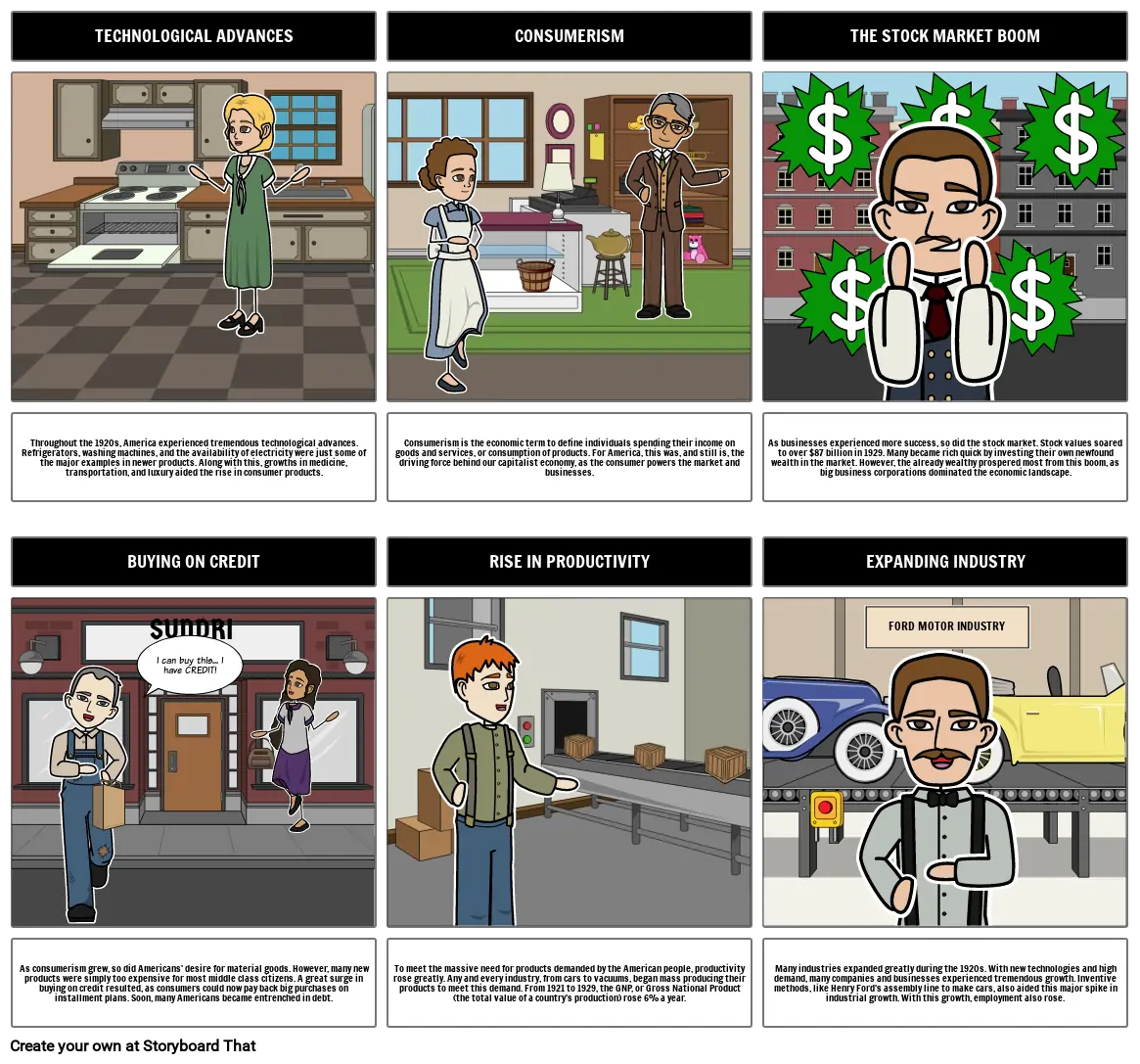
Siužetinės Linijos Tekstas
- TECHNOLOGICAL ADVANCES
- CONSUMERISM
- THE STOCK MARKET BOOM
- Throughout the 1920s, America experienced tremendous technological advances. Refrigerators, washing machines, and the availability of electricity were just some of the major examples in newer products. Along with this, growths in medicine, transportation, and luxury aided the rise in consumer products.
- BUYING ON CREDIT
- I can buy this... I have CREDIT!
- SUNDRIES
- Consumerism is the economic term to define individuals spending their income on goods and services, or consumption of products. For America, this was, and still is, the driving force behind our capitalist economy, as the consumer powers the market and businesses.
- RISE IN PRODUCTIVITY
- As businesses experienced more success, so did the stock market. Stock values soared to over $87 billion in 1929. Many became rich quick by investing their own newfound wealth in the market. However, the already wealthy prospered most from this boom, as big business corporations dominated the economic landscape.
- EXPANDING INDUSTRY
- FORD MOTOR INDUSTRY
- As consumerism grew, so did Americans' desire for material goods. However, many new products were simply too expensive for most middle class citizens. A great surge in buying on credit resulted, as consumers could now pay back big purchases on installment plans. Soon, many Americans became entrenched in debt.
- To meet the massive need for products demanded by the American people, productivity rose greatly. Any and every industry, from cars to vacuums, began mass producing their products to meet this demand. From 1921 to 1929, the GNP, or Gross National Product (the total value of a country's production) rose 6% a year.
- Many industries expanded greatly during the 1920s. With new technologies and high demand, many companies and businesses experienced tremendous growth. Inventive methods, like Henry Ford's assembly line to make cars, also aided this major spike in industrial growth. With this growth, employment also rose.
Sukurta daugiau nei 30 milijonų siužetinių lentelių

